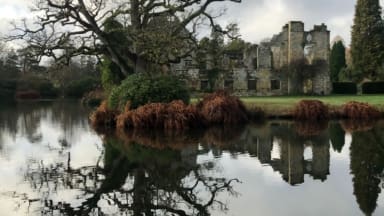
The National Trust (NT) says that climate change is the biggest threat to the coastline, countryside and historic buildings they care for. “From protecting and planting trees to working with coastal communities, helping people, heritage and nature adapt to a changing climate is at the heart of everything we do”, say the charity.
The new report, “A Climate for Change: Adaptation and the National Trust“, calls on the government to do more to support organisations adapt to climate change. The trust is calling for a new Climate Resilience Bill to create effective legal frameworks, targets and duties for climate adaptation.
According to the NT if urgent action isn’t taken, they predict that more than 70% of the 28,500 historic homes, 250,000 hectares of land and 780 miles of coastline under their care will be “at medium or high risk of climate-related hazards by 2060”.
Building climate resilience
The new report builds on over two decades of work to ensure coastline, countryside, rivers and historic buildings are ready for and resilient to the current and future consequences of climate change. The charity are testing new adaptation approaches to ascertain where response improvement can be made. The NT says planning for the worst will help identify the vulnerable sites across England, Wales and Northern Ireland and use knowledge gained on the ground by local teams to adapt to the impacts of climate change.
Central to the work is their Climate Change Hazard Map, which the trust is using to monitor the climate change threats posed to the specific properties, parks, gardens and land holdings, by mapping current extreme weather events, such as rainfall, drought, flooding and wildfires.
The approach
The trust is assessing both short and long terms challenges. Short term challenges are defined as those caused by flooding, wildfires, drought and coastal erosion. Long term challenges are those caused by extreme weather, threatening wildlife habitats, and increase humidity impacts priceless artworks and collections.
In order to address the challenges, the trust are building climate adaptation into their operations and changing processes, practices and structures – such as planting crops and flowers able to survive high temperatures and drought. They are also working towards climate change mitigation, aiming to help reduce the harmful impacts of human activity on the global climate, such as planting trees to help prevent flooding and store carbon.
Example
The Jacobean house, Blickling Hall in Norfolk situated in close proximity to the River Bure. Extremes in both rainfall and drought are threatening the building’s structure. The ornamental parterre garden is flooding and water is being pushed through the brick retaining walls of the moat. If this continues, parts of the moat wall might collapse. Built on a seam of clay which is sensitive to changes in moisture as a consequence the building is showing signs of movement which if continues, the external walls could start to crumble. To manage the situation the trust are researching and monitoring the buildings structure, conducting CCTV surveys of drainage systems and hydrologic studies. The adaptations include;
- Installation of a new drain linking to two 8,000-litre water storage tanks to keep the new wall secure and capturing water for garden use.
- Clearing and repairing the culverts around the mansion and alongside the lake to make the Victorian water systems more accessible and viable.
- Repairing the sluice and lake wall within the dam of the lake to reduce potential flooding.
Adapting to the changes will not be easy. The trust operates across England, Wales and Northern Ireland all with varying impacts of climate change, different for every location and property types. Adapations are expensive and draw already limited budgets and whilst changes can be monitored and modelled, the future is unpredictable and uncertain.

